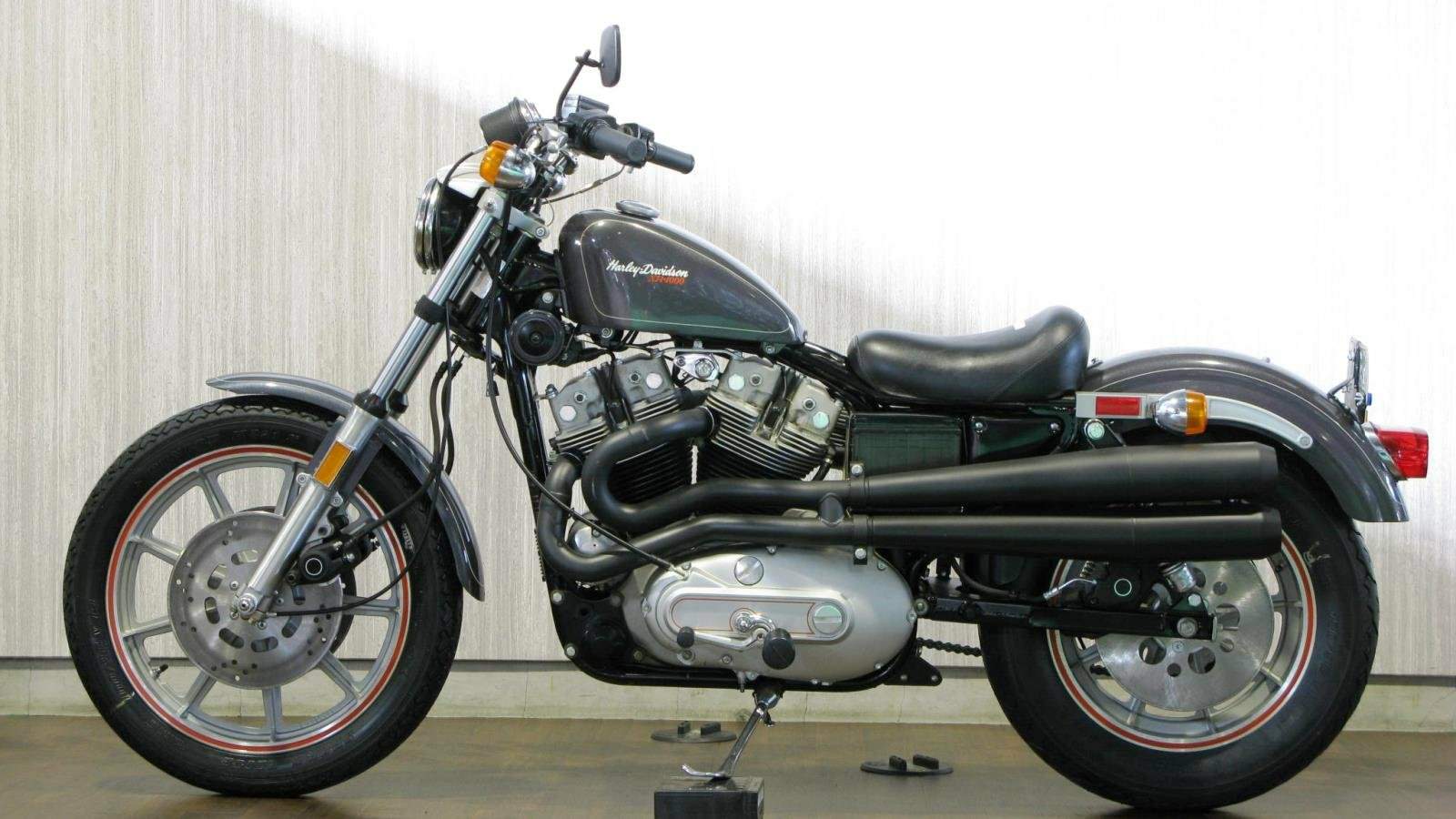Mufflers masquerading as a dirt-track exhaust system and a pair of 36mm Dell'Orto pumper carbs fitted with K&N; filters helped the XL manage 10 more horses than a stock '83 Sportster. Enough to punt the 495-pound package down the quarter-mile in a respectable 12.77 seconds at 102 mph-competitive with Japanese 650cc fours of the day. New 11-inch rotors and more powerful calipers offer a rare flash of brilliance. Beyond that, you're careening from one disappointment to the next.
Pipes roast your right calf. Carbs bite your left knee. Asymmetrical weight distribution means an inborn predilection for turning left. Soft springs and non-existent damping add up to incorrigible behavior in every turn. Power is linear enough, but heinous vibration anywhere near the 6200-rpm rev limit encourages short shifting. The stiff, balky transmission discourages shifting altogether. An equally uncooperative clutch makes finding neutral somewhere between difficult and impossible. Rough treatment takes its toll on fragile internal cogs, with disastrous results.
Sportster underpinnings held the XR1000's original asking price to a quasi-rational $6995-about what you would have paid for a real-steel XR750 back then. But the street XR was too much for The Motor Company faithful, and not nearly enough to distract bevel-booted sporting types from something like Honda's $3698 CB1100F. Production was limited: About 1000 bikes left the factory in '83, followed by about 750 in '84. Most finally sold below the original asking price, though a clean example commands far more today. As an emotional talisman or an investment that comes out of the garage to channel Bart Markel on weekends, the XR1000 is actually pretty smart. But if you find one, make sure it's not a reconstituted racebike. And make sure it's original, all the way down to nuts and bolts-any deviation from stock takes a bite out of its value. And don't write a check based on Internet auction descriptions and a few fuzzy 72-dpi images. Do your homework and check it out in person. Prices hinge on condition more than vintage. A pristine example goes for about $12,000 these days. Seen for what it is, the XR1000 is a rolling homage to the best racing on earth. Beyond that, don't say we didn't warn you.







